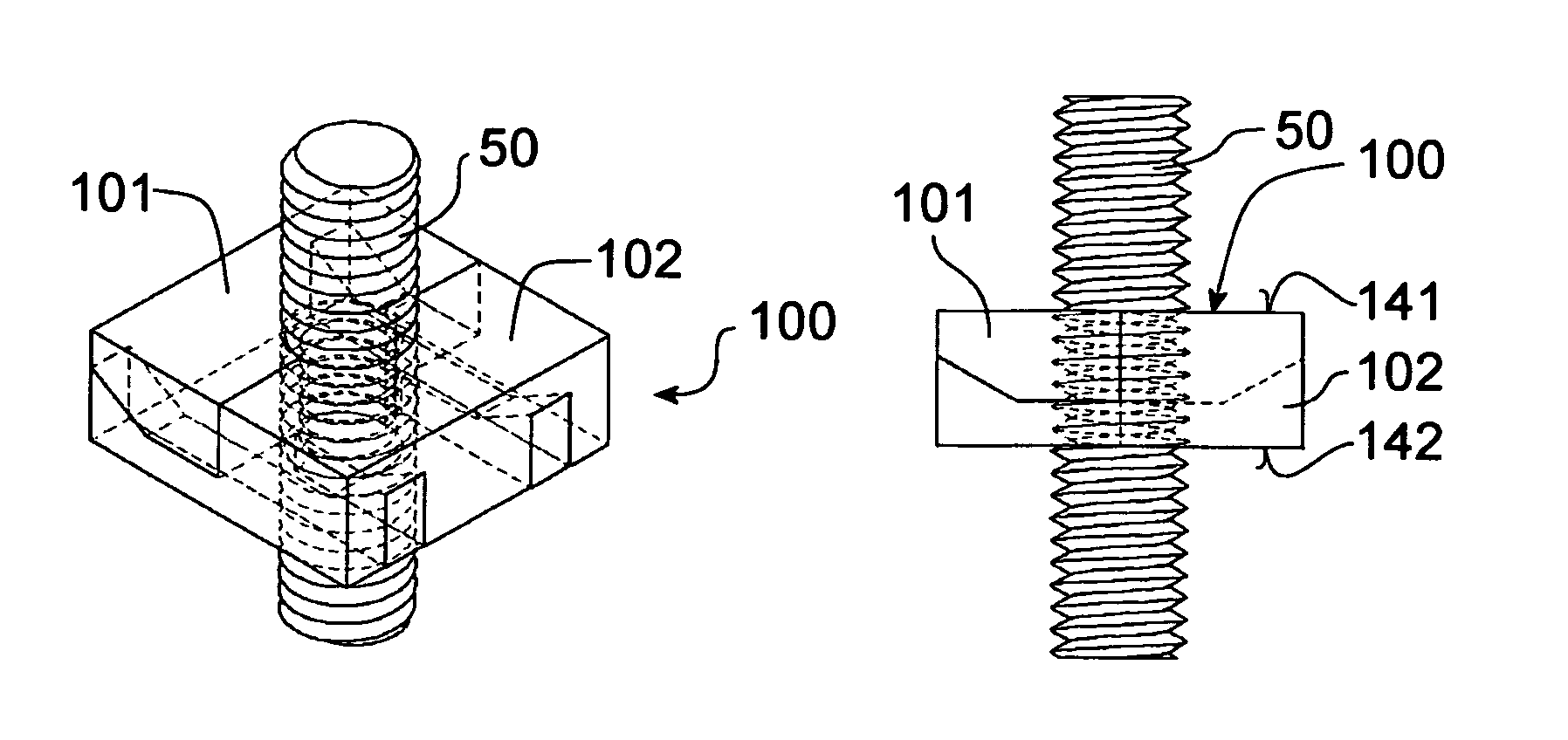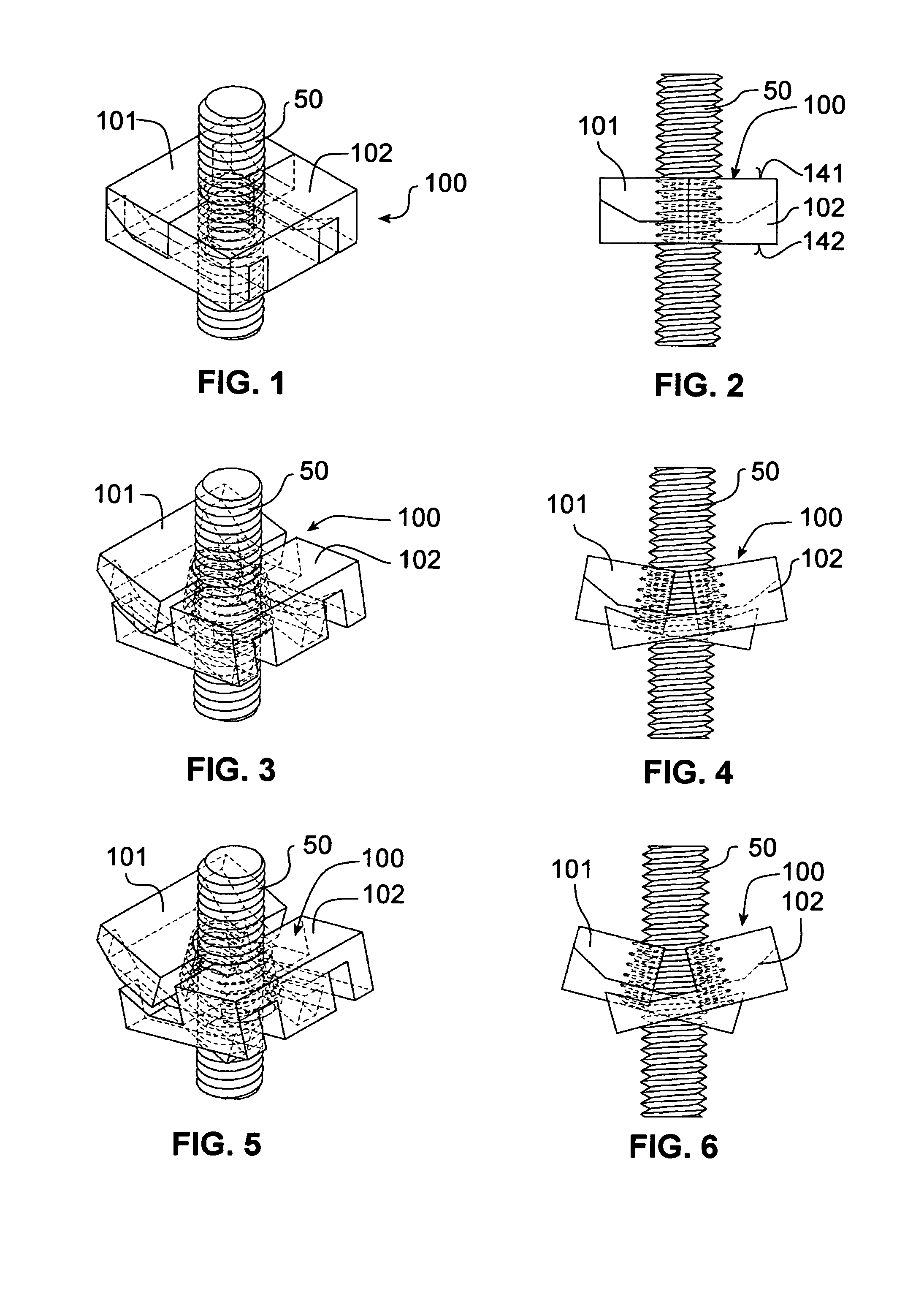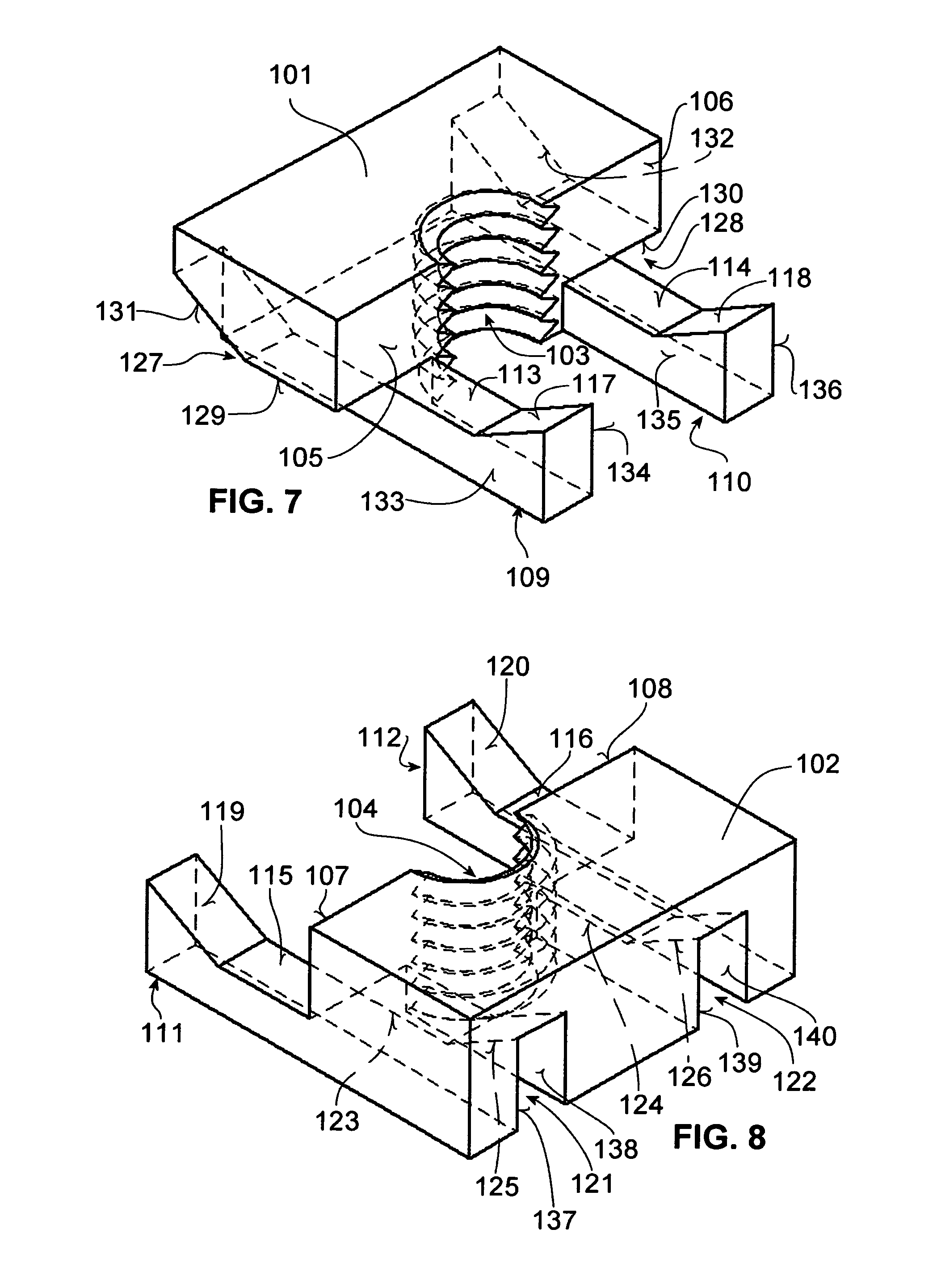Nut having at least two parts
a technology of nuts and parts, applied in the field of nuts, can solve the problems of difficult or impossible to screw a nut onto an external thread from the free end, complex manufacturing and handling of these nuts, in particular the attachment of the locking pin, and the design is also extremely complex to manufacture and handle. , to achieve the effect of manufacturing in large numbers very inexpensively
- Summary
- Abstract
- Description
- Claims
- Application Information
AI Technical Summary
Benefits of technology
Problems solved by technology
Method used
Image
Examples
Embodiment Construction
[0071]FIGS. 1 through 8 show a first embodiment of a nut 100 according to the system described herein. It has two parts 101, 102, which are complementary in shape. In FIGS. 1 and 2, parts 101, 102 are joined together in such a way that they surround an external thread 50 with a small clearance. This position of parts 101, 102 of the nut is referred to in this description as the use position. FIGS. 7 and 8 in particular show that each nut part 101, 102 has an internal thread section 103, 104, together forming an internal thread encircling external thread 50 with a small clearance in the assembled use position of nut parts 101, 102 (FIGS. 1 and 2).
[0072]Each internal thread section 103, 104 extends over 180° of the internal thread. The internal thread sections 103, 104 are separated from one another in a plane which contains the thread axis in the use position shown in FIGS. 1 and 2.
[0073]FIGS. 7 and 8 show that both nut parts 101, 102 have stop surfaces 105 through 108 running in the...
PUM
 Login to View More
Login to View More Abstract
Description
Claims
Application Information
 Login to View More
Login to View More - R&D
- Intellectual Property
- Life Sciences
- Materials
- Tech Scout
- Unparalleled Data Quality
- Higher Quality Content
- 60% Fewer Hallucinations
Browse by: Latest US Patents, China's latest patents, Technical Efficacy Thesaurus, Application Domain, Technology Topic, Popular Technical Reports.
© 2025 PatSnap. All rights reserved.Legal|Privacy policy|Modern Slavery Act Transparency Statement|Sitemap|About US| Contact US: help@patsnap.com



